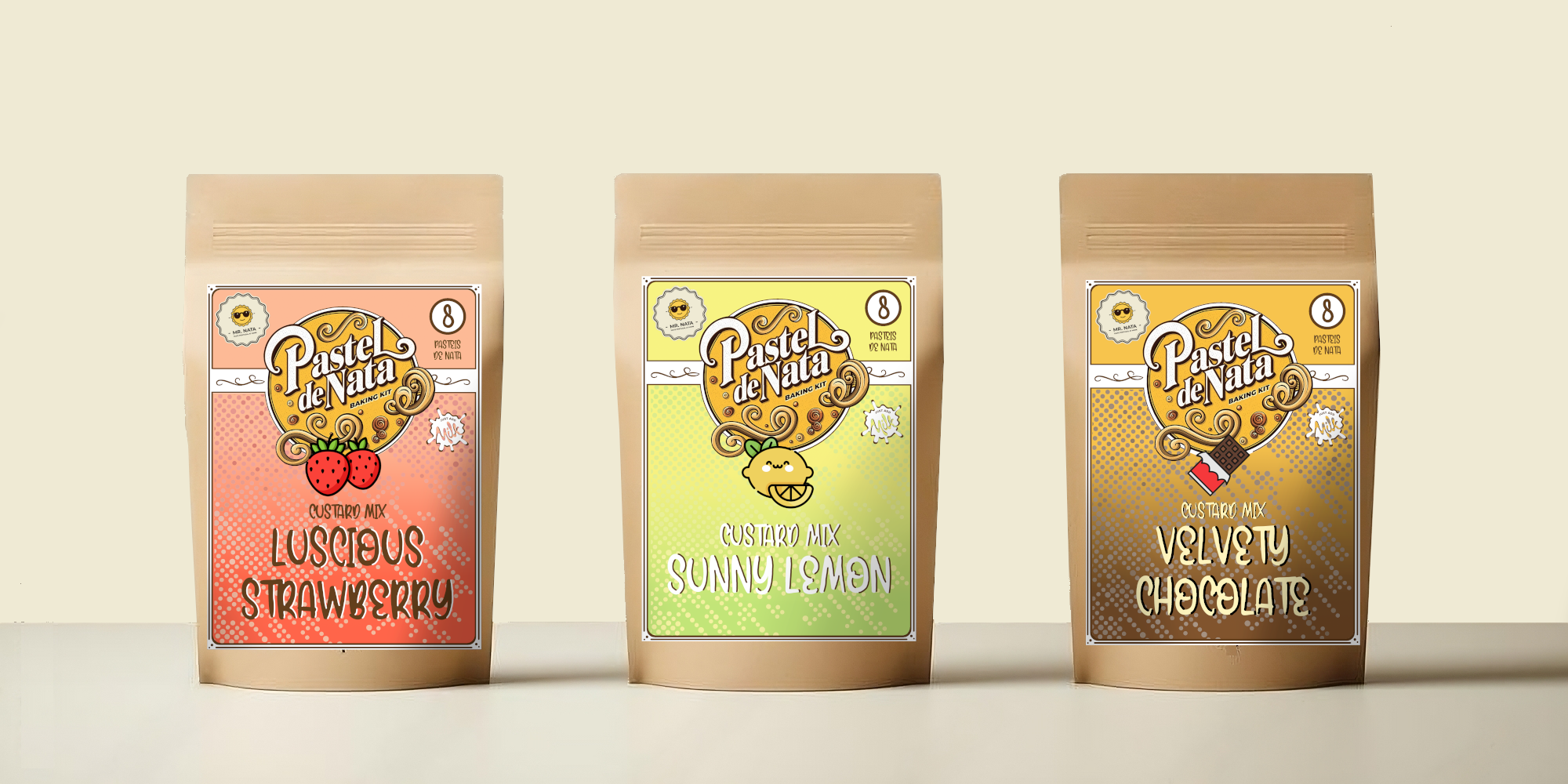Pastéis de Nata vs. Custard Tarts: what’s the difference?
When it comes to sweet, creamy desserts, both Pastéis de Nata and custard tarts are favorites for many dessert lovers. But while these treats share some similarities, they are far from identical. Whether you’ve had a Portuguese Pastel de Nata or a classic British custard tart, you’ve probably wondered what sets these two popular pastries apart. Let’s explore the key differences between these beloved desserts and why each one stands out in its own unique way.
1. Origins: Portugal vs. Britain
Pastéis de Nata originate from Portugal, specifically from the Jerónimos Monastery in Lisbon, where they were first made in the early 19th century by monks. Their popularity quickly spread, and today, they are one of the country’s most iconic desserts. These tarts are also known as Pastéis de Belém, named after the Lisbon neighborhood where they were first sold outside the monastery.
On the other hand, custard tarts have roots in Britain, where they have been a popular dessert for centuries. Traditionally made with a shortcrust pastry base and a smooth custard filling, British custard tarts have a simpler design compared to the layered complexity of Pastéis de Nata.
Key Difference:
Pastéis de Nata: Originated in Portugal, with a flaky pastry and caramelized top.
Custard Tarts: Originated in Britain, with a classic shortcrust pastry and smooth custard.
2. The Pastry: Puff Pastry vs. Shortcrust
One of the most significant differences between Pastéis de Nata and custard tarts lies in the type of pastry used.
Pastéis de Nata are known for their crispy, flaky puff pastry that creates a delicate, buttery base. The thin layers of pastry are essential for achieving the signature light and crunchy texture that contrasts with the creamy custard filling.
On the other hand, custard tarts use a more dense shortcrust pastry that’s sturdy and holds its shape well. This pastry is crumbly, less flaky, and has a buttery richness, but it doesn’t provide the same crispness as puff pastry.
Key Difference:
Pastéis de Nata: Made with flaky, layered puff pastry for a crispy texture.
Custard Tarts: Made with shortcrust pastry, which is dense and crumbly.
3. The Filling: Caramelized Custard vs. Smooth Custard
When it comes to the filling, both Pastéis de Nata and custard tarts are filled with a creamy custard, but the texture and flavor are quite different.
Pastéis de Nata have a custard filling made from egg yolks, sugar, and cream, with a rich, smooth texture that’s slightly caramelized on top after baking. The caramelization adds a hint of sweetness and depth, giving the tarts their distinctive look and flavor. The custard in Pastéis de Nata is often slightly firmer and creamier due to the high baking temperature.
Custard tarts, in contrast, have a smoother, more delicate custard made from whole eggs, sugar, and milk or cream. British custard tarts are baked at a lower temperature, which results in a silkier, softer filling that remains pale in color without the caramelized top.
Key Difference:
Pastéis de Nata: Custard is rich, slightly caramelized, and firmer due to high baking temperatures.
Custard Tarts: Custard is smoother, softer, and lacks caramelization.
4. Baking Temperature: High Heat vs. Low Heat
Another key difference between Pastéis de Nata and custard tarts is the baking temperature.
Pastéis de Nata are traditionally baked at very high temperatures, typically around 250°C (482°F) or more, for a short time. This high heat is what gives the pastry its crispy, caramelized exterior and slightly burnt custard top, which is a signature feature of the tart.
In contrast, custard tarts are baked at a much lower temperature, around 180°C (350°F), for a longer period. This allows the custard to set slowly and maintain a smooth, creamy texture without browning on top.
Key Difference:
Pastéis de Nata: Baked at high temperatures for a caramelized top and crispy pastry.
Custard Tarts: Baked at lower temperatures for a smooth, creamy filling.
5. Flavor Profile: Sweet and Caramelized vs. Mild and Creamy
While both tarts are delicious, their flavor profiles are noticeably different.
Pastéis de Nata have a sweet, slightly caramelized flavor, with the custard being creamy but more robust in taste. The caramelized top adds a slight crunch and a deeper sweetness. Traditionally, cinnamon or powdered sugar is sprinkled on top of the tart, enhancing the flavor and adding a touch of spice.
Custard tarts, by comparison, are more mild and creamy in flavor. They have a smooth, silky texture with a subtle sweetness, often flavored with a hint of nutmeg on top. The flavors are simpler and more delicate, making them a comforting dessert.
Key Difference:
Pastéis de Nata: Rich, sweet, slightly caramelized flavor, often served with cinnamon or sugar.
Custard Tarts: Mild, creamy flavor, typically sprinkled with nutmeg.
Two Delicious Tarts, One Unique Experience
Both Pastéis de Nata and custard tarts have earned their place as classic desserts in their respective countries, but they offer distinctly different experiences. From the crispy, caramelized goodness of a Pastel de Nata to the soft, smooth comfort of a custard tart, each pastry has its own charm.
If you’re eager to try your hand at baking authentic Pastéis de Nata at home, the Mr Nata kit provides everything you need to recreate this iconic Portuguese treat with ease. With our stainless steel molds and custard mix, you can enjoy the crisp, creamy flavors of Portugal’s favorite tart in your own kitchen.
Ready to bring the taste of Portugal home? Visit MrNata.com and start baking today!






